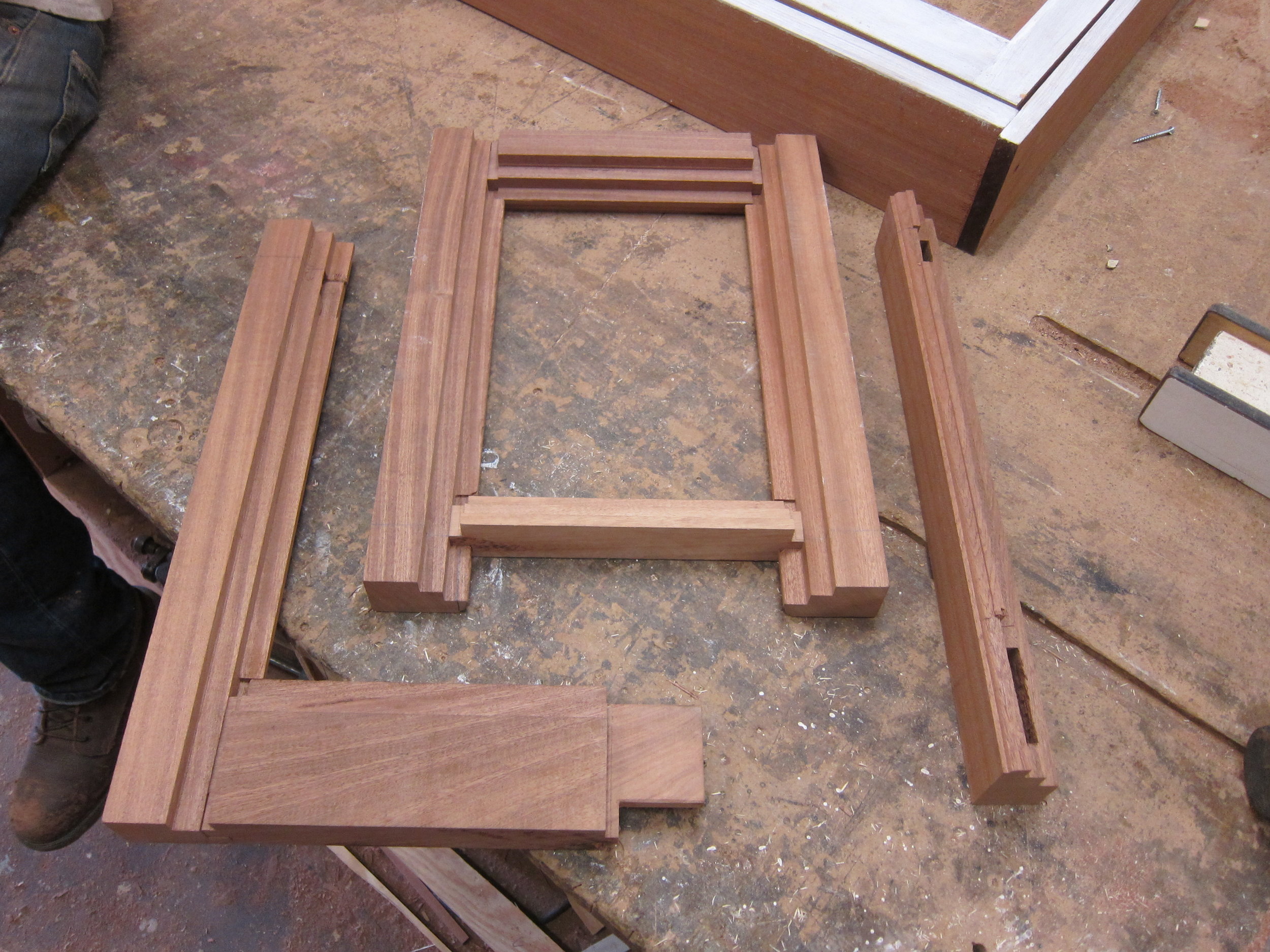Mock-ups

An 1 3/4” thick Sapele Mahogany sash with traditional joinery and profiles adapted for insulating glass. We made 4,000 sash like this sample for the GSA headquarters. The deeper relief for the insulating glass panels complicates joinery and assembly.

Samples for the Rayburn Office Building replicating details from the early 1960s. This is stave core door construction where door elements have at their core something like a glued-up butcher block. This technique evolved in America in the 1880s once the woodworking industry was fully machine driven. This display describes the varied veneer thicknesses required for the unusual and “unbalanced” door design.

The thick veneer shown at the center-top sample is sawn, not sliced, not available for commercial purchase. We saw these veneers in-house. Sample on the right has a pine core, Baltic Birch underlayment, and factory-sliced walnut veneers.

The door design at Rayburn Office Building reflected the hierarchy of politics. One door face was flush, the other had recessed panels with bolection molding. This required the veneer be supported by the highest quality Birch plywood, so the flush face would remain stable while the panel-side could move.

At Rayburn we had an unusual advantage, we had the original architectural drawings. Those drawings described this door construction as “unbalanced”. Indeed it is, unbalanced and complicated, but at least the working classes are not luxuriated by the view to a paneled door.
